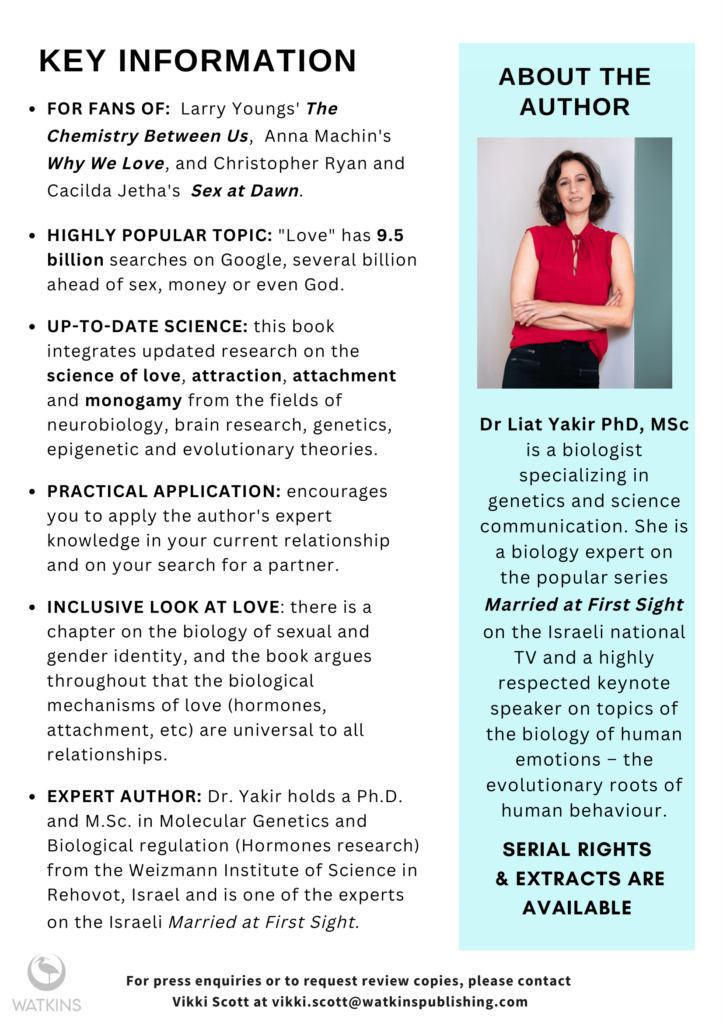
A Brief History Of Love
Biologist Dr. Liat Yakir embarked on a fascinating journey following the couple's romantic love - that elusive and powerful human emotion. Millions have studied her, written about her, and even died in her name - she writes - and yet, we are completely blind to the essence of love, and to the role of the hormones, neurons and genes that dictate who we will fall in love with and who will arouse rejection in us.
Experiments that were conducted among the Arab desert tribes, observations of monkeys in the thick of the jungle, and the behavior of women and men looking for love as well as those who have found it – come together in this book for a fascinating story about the many incarnations of marital love from the dawn of history to the present day. Why can’t we get off Tinder, and how does this relate to one of the most famous psychological experiments in the world? How many potential partners do we have to meet before we find the one? Are we meant to be monogamous? And what is the scientific prescription for maintaining a stable and good relationship?
Today, for the first time in human history, we have both knowledge and the freedom to choose the best love life for us. With or without monogamy, with or without starting a family. But this freedom presents us with new challenges. The multitude of choices in the digital dating world causes cognitive flooding and overcriticism. The biological clock that ticks differently in men and women causes frustration. In the environment of abundance in which we live – an abundance of resources and an abundance of temptations – there is no evolutionary advantage to monogamy for life, and the genes push for diversity and spreading risks. Therefore, in an age of singles saturated with technology, it is even more important to understand the science of love, what is behind our choices, how to choose correctly and how to preserve love over time.
Dr. Liat Yakir (“Marriage at First Sight”) is a biologist and researcher with a doctorate and post-doctorate in genetics and hormone research from the Weizmann Institute of Science. This is her first book.








